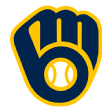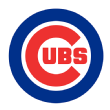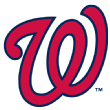As we get closer to the trade deadline, teams are assessing their weaknesses to get a sense of where they might need help to secure a playoff berth and go on a deep run in October. For now, let's focus on the other side of the coin for the National League teams and look at their strengths. What makes these contenders good in the first place and what players and factors can carry these teams to the postseason? I took a look at every NL team with at least a 10 percent shot at the playoffs, per FanGraphs' Playoff Odds plus the first-place Brewers and ranked the teams' respective strengths.
 15. The speed of the Arizona Diamondbacks: What the D-backs may lack in hitting, they often make up for on the basepaths. They don't lead the league in steals with their 57 bags as they sit a handful behind Billy Hamilton's Reds and the Brewers, but nobody is better at taking the extra base on hits. Looking at going first-to-third on a single, first-to-home on a double and second-to-home on a single, Arizona gets that extra base 49 percent of the time, well above the league average of 40 percent. Only the Braves are higher at 50 percent, but the Diamondbacks also lead the league with just 13 outs made on the bases, four fewer than the second-best Braves.
15. The speed of the Arizona Diamondbacks: What the D-backs may lack in hitting, they often make up for on the basepaths. They don't lead the league in steals with their 57 bags as they sit a handful behind Billy Hamilton's Reds and the Brewers, but nobody is better at taking the extra base on hits. Looking at going first-to-third on a single, first-to-home on a double and second-to-home on a single, Arizona gets that extra base 49 percent of the time, well above the league average of 40 percent. Only the Braves are higher at 50 percent, but the Diamondbacks also lead the league with just 13 outs made on the bases, four fewer than the second-best Braves.
Paul Goldschmidt leads the team with 13 steals, but four others have at least five, so speed isn't just coming from one dominant baserunner like the Reds with Hamilton. Eight Diamondbacks have been at least one run above average on the bases this season. Put all that together and Arizona has been more than 18 runs above average on the basepaths, first in the majors. In close games and close races, those extra bases can make a difference.
 14. The Colorado Rockies' bullpen: Signing Greg Holland was a bit of a risk after he had missed all of the 2016 season, but the Rockies' closer has been lights-out, giving up just five runs in 29 appearances, 28 times finishing off a Rockies victory. It isn't just Holland getting the job done. Jake McGee has been very good, Adam Ottavino has been solid, and Chris Rusin has helped out as a multi-inning reliever. Their 4.36 ERA might not scream greatness, but when you add the Coors Field factor, it's still much better than average, and the pen's 3.06 ERA on the road is a truer indicator of their talent.
14. The Colorado Rockies' bullpen: Signing Greg Holland was a bit of a risk after he had missed all of the 2016 season, but the Rockies' closer has been lights-out, giving up just five runs in 29 appearances, 28 times finishing off a Rockies victory. It isn't just Holland getting the job done. Jake McGee has been very good, Adam Ottavino has been solid, and Chris Rusin has helped out as a multi-inning reliever. Their 4.36 ERA might not scream greatness, but when you add the Coors Field factor, it's still much better than average, and the pen's 3.06 ERA on the road is a truer indicator of their talent.
The pen's success has been well-timed as the Rockies lead the majors in win probability added. FanGraphs has two stats, shutdowns and meltdowns, measuring when a bullpen comes in and materially affects the team's chances of winning in either a positive or negative direction. The Rockies' 68 shutdowns is third in MLB and their 23 meltdowns rank first, and the difference of 45 between the two is first by a wide margin. Only the Diamondbacks have a gap more than 30 in the NL.
 13. The Milwaukee Brewers' all-or-nothing swings: Nobody knows how long the Brewers are going to hang around the playoff race. Not a lot about the Brewers stands out. They've gotten solid pitching, in particular from Jimmy Nelson and Chase Anderson, with a healthy Junior Guerra potentially providing a third option, but overall the staff hasn't been great. They don't have a great bullpen. The offense is in the middle of the pack. Their defense, too. The only area where the Brewers seem to be among the leaders is a negative. In the NL, only the Padres have struck out at a greater rate than the Brewers' 25 percent this season, and their 11.6 percent swinging-strike rate is worst in the NL.
13. The Milwaukee Brewers' all-or-nothing swings: Nobody knows how long the Brewers are going to hang around the playoff race. Not a lot about the Brewers stands out. They've gotten solid pitching, in particular from Jimmy Nelson and Chase Anderson, with a healthy Junior Guerra potentially providing a third option, but overall the staff hasn't been great. They don't have a great bullpen. The offense is in the middle of the pack. Their defense, too. The only area where the Brewers seem to be among the leaders is a negative. In the NL, only the Padres have struck out at a greater rate than the Brewers' 25 percent this season, and their 11.6 percent swinging-strike rate is worst in the NL.
But selling out for big swings brings rewards. When you take pitchers' at-bats out of the equation, only the Nationals' hitters have a higher isolated slugging percentage than the .202 put up by the Brewers this season, and only the Nationals among NL teams have homered more than the Brewers. You already know about Eric Thames, but Travis Shaw, Domingo Santana, Keon Broxton and Hernan Perez all have double-digit homers. If the Brewers are going to keep this up, they are going to have to keep hitting the ball out of the park.
 12. Stephen Strasburg: If it weren't for what Max Scherzer is doing, more people might be talking about Strasburg's excellent season for the Nationals. After missing a good chunk of both 2015 and 2016, Strasburg is in the first year of his seven-year, $175 million contract extension he signed last season. His strikeout rate remains elite and his walk rate is above-average; given the increase in offense we've seen over the last few years, the performance this year for Strasburg might be his best yet. For a franchise that has enjoyed regular-season success, but failed to win a playoff series, having Strasburg at his best in addition to Scherzer in the playoffs might finally get them to the next round.
12. Stephen Strasburg: If it weren't for what Max Scherzer is doing, more people might be talking about Strasburg's excellent season for the Nationals. After missing a good chunk of both 2015 and 2016, Strasburg is in the first year of his seven-year, $175 million contract extension he signed last season. His strikeout rate remains elite and his walk rate is above-average; given the increase in offense we've seen over the last few years, the performance this year for Strasburg might be his best yet. For a franchise that has enjoyed regular-season success, but failed to win a playoff series, having Strasburg at his best in addition to Scherzer in the playoffs might finally get them to the next round.
 11. Arizona's co-aces, the best lefty-righty pitching combo in baseball: Last season, Zach Greinke looked like a bit of a bust in the first year of his $206 million contract. His ERA and FIP were over four and he managed to throw just 158 ⅔ innings -- the first time he dipped below 160 innings since 2007 when he spent half the year as a reliever. He still has a long way to go to live up to his contract, but he's certainly pitching like an ace right now with 111 strikeouts against just 19 walks in 97 ⅓ innings.
11. Arizona's co-aces, the best lefty-righty pitching combo in baseball: Last season, Zach Greinke looked like a bit of a bust in the first year of his $206 million contract. His ERA and FIP were over four and he managed to throw just 158 ⅔ innings -- the first time he dipped below 160 innings since 2007 when he spent half the year as a reliever. He still has a long way to go to live up to his contract, but he's certainly pitching like an ace right now with 111 strikeouts against just 19 walks in 97 ⅓ innings.
Greinke's return to form has been encouraging, but Robbie Ray's attempt to join Greinke as co-ace have been a very welcome surprise for the Diamondbacks. Last season, Ray had very good strikeout numbers, a decent amount of walks and was pretty close to average for homers, considering the park he pitches in. It added up to a solid 3.76 FIP, but a .352 BABIP and a below-average 69 percent left-on-base rate inflated his ERA to a poor 4.90. This year Ray still has the high strikeout rate and he's still walking quite a few guys, but he has been a bit better on the homers, leading to a good 3.40 FIP. He's also on the good side of the coin in terms of BABIP and left-on-base percentage, bringing his ERA to an excellent 2.87. He might not continue to get that kind of luck going forward, but Ray has established himself as a good foil for Greinke.
 10. The Chicago Cubs' patience: Kris Bryant and Anthony Rizzo serve to anchor the Cubs' offense. They haven't gotten a lot of help down the lineup, but that tandem hasn't let it affect them. Now hitting one-two atop the Cubs' lineup, they have walk rates near 15 percent. Not much has gone right for Kyle Schwarber as he's a demotion, but he can still take a walk with his 14 percent walk rate. Assuming Schwarber gets back on track, those three batters can do a lot of damage. Add in currently injured Ben Zobrist's 12 percent walk rate and new addition Ian Happ's 11 percent walk rate, and getting on base can help a team fight through slumps. The Cubs' offense has been below-average this season, but Rizzo and Bryant are keeping the group afloat, in part by doing the most important thing a hitter can do: avoid outs.
10. The Chicago Cubs' patience: Kris Bryant and Anthony Rizzo serve to anchor the Cubs' offense. They haven't gotten a lot of help down the lineup, but that tandem hasn't let it affect them. Now hitting one-two atop the Cubs' lineup, they have walk rates near 15 percent. Not much has gone right for Kyle Schwarber as he's a demotion, but he can still take a walk with his 14 percent walk rate. Assuming Schwarber gets back on track, those three batters can do a lot of damage. Add in currently injured Ben Zobrist's 12 percent walk rate and new addition Ian Happ's 11 percent walk rate, and getting on base can help a team fight through slumps. The Cubs' offense has been below-average this season, but Rizzo and Bryant are keeping the group afloat, in part by doing the most important thing a hitter can do: avoid outs.
 9. Carlos Martinez: The Cardinals' ace has quietly turned himself into one of the best pitchers in baseball. In 2015, he rode a high strikeout rate to a 3.01 ERA, a 3.21 FIP and an All-Star appearance. Last year, his strikeout rate came down, but he generated a lot of weak contact, leading to another solid season with a 3.04 ERA and 3.61 FIP. This year, he has combined both, striking out 28 percent of batters and inducing a lot of infield flies and weak ground balls. His 2.87 ERA is behind just Max Scherzer and Clayton Kershaw in the NL, and his 2.7 WAR trails only Scherzer among NL pitchers this season. Over his last seven starts, he is averaging more than seven innings per start with a stellar 1.92 ERA. On a team struggling to find its identity and lacking a true star, the Cardinals will need Martinez to continue to dominate every time out.
9. Carlos Martinez: The Cardinals' ace has quietly turned himself into one of the best pitchers in baseball. In 2015, he rode a high strikeout rate to a 3.01 ERA, a 3.21 FIP and an All-Star appearance. Last year, his strikeout rate came down, but he generated a lot of weak contact, leading to another solid season with a 3.04 ERA and 3.61 FIP. This year, he has combined both, striking out 28 percent of batters and inducing a lot of infield flies and weak ground balls. His 2.87 ERA is behind just Max Scherzer and Clayton Kershaw in the NL, and his 2.7 WAR trails only Scherzer among NL pitchers this season. Over his last seven starts, he is averaging more than seven innings per start with a stellar 1.92 ERA. On a team struggling to find its identity and lacking a true star, the Cardinals will need Martinez to continue to dominate every time out.
 8. The Cubs' defense: The Cubs haven't gotten off to the start everyone expected this season; the pitching has been mediocre and the offense hasn't been good, either. But the defense has come through once again. The group isn't as strong as it was last season -- you can blame Schwarber's time in left field for much of that -- but it is still a solid group led by Gold Glover Jason Heyward along with a very strong infield defense with Addison Russell, Javier Baez, Bryant and Rizzo. The Cubs' ERA of 4.01 doesn't look great compared to last year's 3.15, but it could be worse as the team FIP is 4.21. Cubs' BABIP against is still one of the better figures in the league, which means the Cubs' defense is still doing a very good job of turning balls in play into outs.
8. The Cubs' defense: The Cubs haven't gotten off to the start everyone expected this season; the pitching has been mediocre and the offense hasn't been good, either. But the defense has come through once again. The group isn't as strong as it was last season -- you can blame Schwarber's time in left field for much of that -- but it is still a solid group led by Gold Glover Jason Heyward along with a very strong infield defense with Addison Russell, Javier Baez, Bryant and Rizzo. The Cubs' ERA of 4.01 doesn't look great compared to last year's 3.15, but it could be worse as the team FIP is 4.21. Cubs' BABIP against is still one of the better figures in the league, which means the Cubs' defense is still doing a very good job of turning balls in play into outs.
 7. Max Scherzer: Kershaw might not be the best pitcher in the National League, but if he's not, then Scherzer is. Last year's Cy Young Award winner has avoided the slow start from last season by striking out 145 against just 24 walks in 107 ⅔ innings. His near no-hitter dropped his ERA to 2.07 with great peripherals leading to a 2.77 FIP. Over the last four years, including playoffs, Scherzer has exceeded 225 innings every year, averaging 233 ⅓ innings per season during that time. Nearing 100 innings already this year, he is the workhorse the team can build a staff around -- and win a short series with up front.
7. Max Scherzer: Kershaw might not be the best pitcher in the National League, but if he's not, then Scherzer is. Last year's Cy Young Award winner has avoided the slow start from last season by striking out 145 against just 24 walks in 107 ⅔ innings. His near no-hitter dropped his ERA to 2.07 with great peripherals leading to a 2.77 FIP. Over the last four years, including playoffs, Scherzer has exceeded 225 innings every year, averaging 233 ⅓ innings per season during that time. Nearing 100 innings already this year, he is the workhorse the team can build a staff around -- and win a short series with up front.
 6. The Los Angeles Dodgers' back-to-back rookie sensations: Last year, Corey Seager quickly emerged as the clear favorite for Rookie of the Year and ended up an MVP candidate, finishing third behind Kris Bryant and Daniel Murphy. Seager has had little trouble this year producing at a level comparable to last season, with a 141 wRC+ and a great all-around game. A teammate is now attempting to follow that path; although Cody Bellinger didn't start the season in the majors, he's not giving up his spot now that he has one, playing outfield as well as first base to stay in the lineup. Nobody, not even Aaron Judge, hits homers as often as Bellinger has, cranking out 22 homers in just over 200 plate appearances. With Justin Turner now back, the Dodgers could rival the Nationals for the best offense in the National League.
6. The Los Angeles Dodgers' back-to-back rookie sensations: Last year, Corey Seager quickly emerged as the clear favorite for Rookie of the Year and ended up an MVP candidate, finishing third behind Kris Bryant and Daniel Murphy. Seager has had little trouble this year producing at a level comparable to last season, with a 141 wRC+ and a great all-around game. A teammate is now attempting to follow that path; although Cody Bellinger didn't start the season in the majors, he's not giving up his spot now that he has one, playing outfield as well as first base to stay in the lineup. Nobody, not even Aaron Judge, hits homers as often as Bellinger has, cranking out 22 homers in just over 200 plate appearances. With Justin Turner now back, the Dodgers could rival the Nationals for the best offense in the National League.
 5. The Rockies' road work: Taking advantage of the thin air in Colorado has long been the hallmark of Rockies teams. They've led the National League in slugging each of the past four years, but the offense has been a bit overlooked this season as their .179 isolated slugging percentage is just middle of the pack, and overall the offense is about 10 percent below league average. But the team is doing its work on the road, winning nearly two-thirds of its games away from Coors Field. The rotation lacks a dynamic presence, but a bunch of solid, pitch-to-contact pitchers are letting the defense excel. The Rockies have been 13 runs above average on defense this season per ultimate zone rating. This could be the first time since 2007 that the Rockies have posted an above-average number. That 2007 season went pretty well for the Rockies as the team ended up in the World Series. Winning on the road can make the difference in the playoffs, and the Rockies appear prepared to take advantage.
5. The Rockies' road work: Taking advantage of the thin air in Colorado has long been the hallmark of Rockies teams. They've led the National League in slugging each of the past four years, but the offense has been a bit overlooked this season as their .179 isolated slugging percentage is just middle of the pack, and overall the offense is about 10 percent below league average. But the team is doing its work on the road, winning nearly two-thirds of its games away from Coors Field. The rotation lacks a dynamic presence, but a bunch of solid, pitch-to-contact pitchers are letting the defense excel. The Rockies have been 13 runs above average on defense this season per ultimate zone rating. This could be the first time since 2007 that the Rockies have posted an above-average number. That 2007 season went pretty well for the Rockies as the team ended up in the World Series. Winning on the road can make the difference in the playoffs, and the Rockies appear prepared to take advantage.
 4. Paul Goldschmidt: He might not bring the awe of the NL's top slugger (more on that guy in a moment), but the Arizona Diamondbacks' first baseman has been the single best offensive player in the NL so far this season. Goldschmidt does everything well as a hitter -- hitting for average and power while drawing walks -- and his baserunning makes him a complete player. Last season, Goldschmidt became the only first baseman this century to steal 30 bases. He has a shot to do it in back-to-back seasons, which hasn't been done since George Sisler in 1921 and 1922. His 3.9 fWAR paces the NL by more than half a win, and it is possible that no player is more important to his team's success than Goldschmidt. His wRC+ this season is 169, while the rest of the team is a well-below-average 88.
4. Paul Goldschmidt: He might not bring the awe of the NL's top slugger (more on that guy in a moment), but the Arizona Diamondbacks' first baseman has been the single best offensive player in the NL so far this season. Goldschmidt does everything well as a hitter -- hitting for average and power while drawing walks -- and his baserunning makes him a complete player. Last season, Goldschmidt became the only first baseman this century to steal 30 bases. He has a shot to do it in back-to-back seasons, which hasn't been done since George Sisler in 1921 and 1922. His 3.9 fWAR paces the NL by more than half a win, and it is possible that no player is more important to his team's success than Goldschmidt. His wRC+ this season is 169, while the rest of the team is a well-below-average 88.
 3. The Washington Nationals' contact-and-power lineup: The Nationals are a high-contact team, with their strikeout rate under 20 percent ranking in the top third in the National League. That contact has helped propel them to an NL-best .274 average, and an average walk rate puts their OBP at a .339 clip (second in the NL). The team has combined that contact with power for a league-leading .198 ISO. Murphy has been hot for nearly two years now, and he strikes out in just 10 percent of his plate appearances despite very good power numbers. Anthony Rendon strikes out just 14 percent of the time, while the resurgent Ryan Zimmerman is still better than league average at just 18 percent. Washington boasts four of the top 15 batters in the NL right now with no other team having two players ranked that high.
3. The Washington Nationals' contact-and-power lineup: The Nationals are a high-contact team, with their strikeout rate under 20 percent ranking in the top third in the National League. That contact has helped propel them to an NL-best .274 average, and an average walk rate puts their OBP at a .339 clip (second in the NL). The team has combined that contact with power for a league-leading .198 ISO. Murphy has been hot for nearly two years now, and he strikes out in just 10 percent of his plate appearances despite very good power numbers. Anthony Rendon strikes out just 14 percent of the time, while the resurgent Ryan Zimmerman is still better than league average at just 18 percent. Washington boasts four of the top 15 batters in the NL right now with no other team having two players ranked that high.
 2. Bryce Harper: If there's one player in the National League about whom you say, "Don't let this guy beat you," it's Bryce Harper. After one of the greatest offensive seasons of all time in 2015, Harper was merely good last year. This season, the great version of Harper appears to be back. He leads all of baseball in intentional walks. Among NL players, only Harper, Goldschmidt and Joey Votto have put up on-base percentages above .400 and slugging percentages above .596 this year. If need be, he can carry an offense, though he might not have to.
2. Bryce Harper: If there's one player in the National League about whom you say, "Don't let this guy beat you," it's Bryce Harper. After one of the greatest offensive seasons of all time in 2015, Harper was merely good last year. This season, the great version of Harper appears to be back. He leads all of baseball in intentional walks. Among NL players, only Harper, Goldschmidt and Joey Votto have put up on-base percentages above .400 and slugging percentages above .596 this year. If need be, he can carry an offense, though he might not have to.
 1. The Dodgers' Clayton-to-Kenley combo: Clayton Kershaw might not have the best playoff reputation -- though some of it is undeserved, as bullpens, pitching on short rest and a slow managerial hook, have hurt him. And the number of homers he has allowed this season have made him merely one of the best pitchers in baseball instead of clearly the best. However, he's still one of the best pitchers in baseball, striking out 115 against 17 walks in 103 ⅓ innings pitched this season.
1. The Dodgers' Clayton-to-Kenley combo: Clayton Kershaw might not have the best playoff reputation -- though some of it is undeserved, as bullpens, pitching on short rest and a slow managerial hook, have hurt him. And the number of homers he has allowed this season have made him merely one of the best pitchers in baseball instead of clearly the best. However, he's still one of the best pitchers in baseball, striking out 115 against 17 walks in 103 ⅓ innings pitched this season.
In Kenley Jansen, Kershaw has the perfect back-end complement to finish a game. Jansen has 50 strikeouts, no walks and has given up one homer -- a solo shot in a four-run game -- in 31 innings. The Dodgers closer has entered a game 22 times when his team was either tied or ahead by one or two runs, and he has yet to give up a single run in those situations. He has pitched more than one inning six times this season after five scoreless multi-inning appearances in the playoffs last year.
